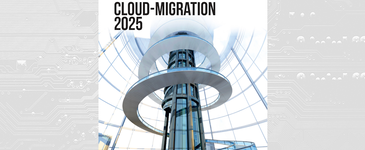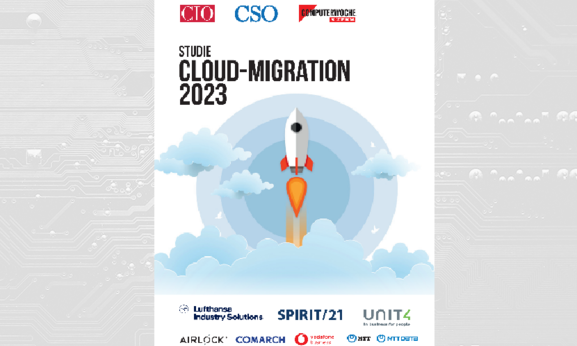Cloud computing is one of the most important basic technologies in the digital transformation. It promises a high degree of flexibility, easy scalability and lower costs for infrastructure, software and IT operations.
Cloud computing has become a standard in certain fields, such as applications in the Internet of Things (IoT), mobile solutions backend and portal solutions. Logistics, Industry 4.0 and collaboration solutions also increasingly rely on cloud computing. Providers of standard applications use the cloud to offer software-as-a-service solutions. Today, 82 percent of the companies in Germany use cloud services. According to the Cloud Monitor 2021 study published by Bitkom Research and KPMG, those companies include SMEs and major corporations alike.
Shifting application environments to the cloud
In addition to using new cloud services and developing new solutions in the cloud, businesses may also find it beneficial to move existing application environments to the cloud, thereby saving money. However, the "lift and shift" approach of transferring existing structures without any further change or adaptation often does not cut costs in the long term. Instead, businesses need an overall strategy that combines the advantages of the cloud with the internal adaptation of projects and operations to DevOps and agile models. Lufthansa Industry Solutions has designed a model for the migration of existing applications that consists of four main phases.
1. Strategic focus
The first phase focuses on defining the strategic goals of cloudization based on corporate strategy. It aligns guidelines with the operation of cloud applications. With regard to guidelines, businesses should pay particularly close attention to the development, integration, launch and phase-out of applications, which are what make the efficient management of the cloud environment possible in the first place.
Cloud computing also requires the further development and advancement of traditionally established processes. Infrastructure and network are now part of the code belonging to a solution for the company within its own data center. This calls for a new way of looking at in-house IT and IT-related processes as well as their realignment and enhancement. Because of the vital importance of categorizing data with regard to reliability, availability and integrity before shifting it to the cloud, information security also plays a very important role.
2. Analysis
The analysis phase takes a critical look at the current IT environment based on the previously defined cloud and security guidelines. Part of this process is reviewing product and interface licenses with regard to their transferability to the cloud, to name just one example. It is also essential to consider the use of alternative products that provide better functional coverage.
3. Migration concept
The third phase focuses on developing the final target architecture, the operating concept and the migration plan for the actual shift. A test and acceptance plan is also part of this phase, which also identifies the applications that need to be reworked and improved before they can be migrated to the cloud. At this point, a company can start estimating the actual potential of the cloud.
4. Transformation
The subsequent transformation phase focuses on migrating the applications to the new IT architecture, taking them live and reviewing the success of the project in several steps, some of them simultaneously.
Lufthansa Industry Solutions has sound, long-standing experience resulting from collaboration with several leading cloud providers. The range of services offered by Lufthansa Industry Solutions range from consultancy and implementation support to operation and management:
- Development of cloud strategies
- Advice in selecting cloud providers
- Integration architecture
- Cloud connectivity architecture
- Identity management architecture
- Strategies for the use of infrastructure as a service (IaaS), platform as a service (PaaS), function as a service (FaaS) and software-defined networks (SDNs)
- Definition of client-specific standardization templates
- Cloud operation strategies
- Use monitoring
- Cloud governance
- Cost/benefit analysis
- Migration strategies
- Cloud security, advanced threat detection
- Development of software solutions based on cloud architecture
- Launch of standard solutions in the cloud and integration with existing backends
- Development of software solutions in the cloud
- Operation of cloud-based applications
- Cloud security consulting, security analytics, security pen testing










![[Translate to English:] [Translate to English:]](/fileadmin/_processed_/9/1/csm_salesforce-beratung-lhind_e5b52603a2.png)